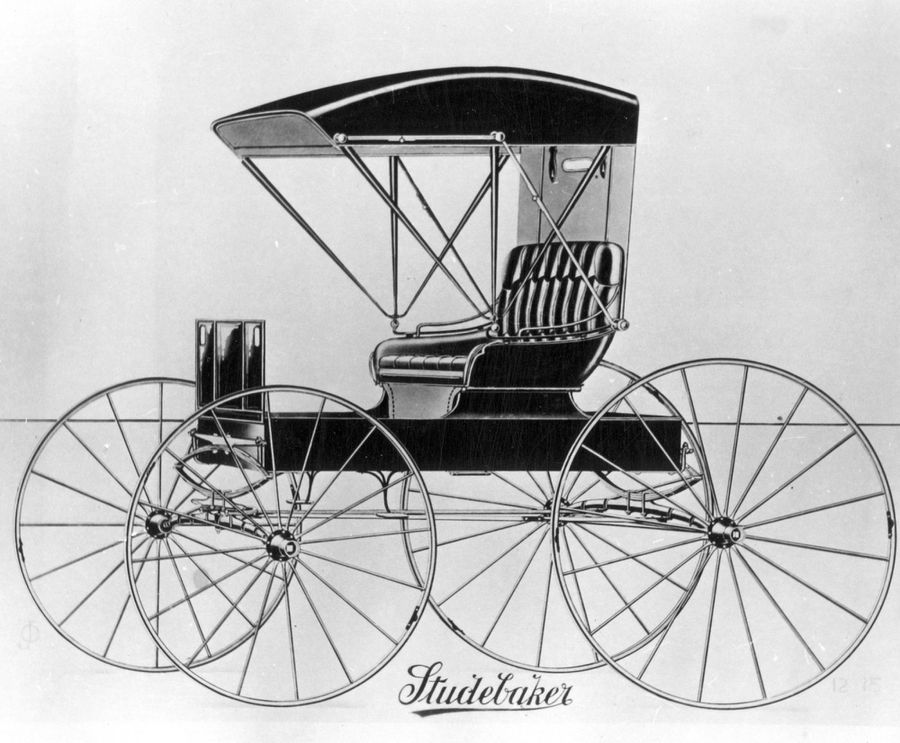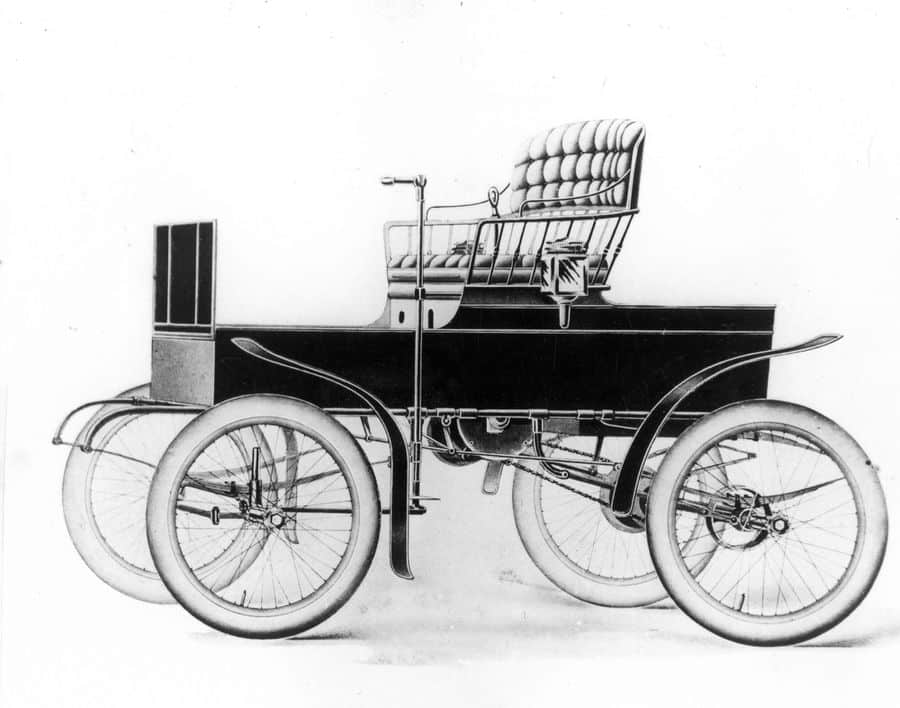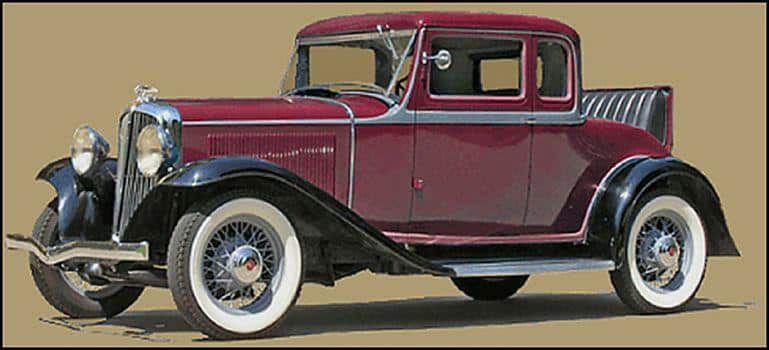On April 14, 2019, South Bend mayor Pete Buttigieg announced that he was running for President of the United States. The announcement came from a run-down warehouse building in South Bend, Indiana. He could have picked a nicer location but chose this one because it was once part of a massive Studebaker factory.
For large parts of the 20th century, Studebaker dominated the United States car market. They employed thousands and had a strong reputation as a company that was the epitome of an American dream. Today, many people wouldn’t even recognize the name. How did a titan of American industry fall so low? Let’s take a look at Studebaker’s exciting history.
German Wagon Makers
Descended from German immigrants that came over in the 18th-century, three brothers founded Studebaker in 1868. Before the formation, the brothers were all successful businessmen in their own right. One owned a general store, another made wheelbarrows in the Gold Rush, and the last built army wagons. They decided to throw in together and formed the Studebaker Brothers Manufacturing Company.

Before the automobile came along, Studebaker was a well-known brand of carriage. President Harrison even ordered a some for the White House when in 1889. Some are even in operation today! If you’ve ever seen Budweiser Clydesdales, you’ll notice a modified Studebaker wagon carrying beer.
Studebaker Moves Into The Automotive Industry
On January 29, 1886, Carl Benz submitted paperwork for a patent that changed the world – the first automobile. It was a three-wheeled automobile known as the Velocipede. By the end of the 20th century, cars were popular around the world.
Realizing the days of wagons and carriages were over, the Studebaker smartly pivoted to the car business. The first Studebaker electric car came out in 1902, and they released a gasoline car in 1904. Their gas cars were top-rated and sold well for the next couple of decades.

Studebaker’s automobile business benefited greatly from World War One. Britain, France, and Russia ordered thousands of saddles, harnesses, ambulances, cars, and wagons. This demand helped them finance their auto wing. By 1918, Studebaker ended their wagon and harness business, entirely focusing on automobiles.
The 1920s and the Great Depression
Studebaker flourished after World War I. New technology allowed them to build better cars that became popular with the American public.
They began expanding their original factory until it covered 225 acres and employed 23,000 people in South Bend. They were able to build 180,000 cars every year. At one point, they operated plants in Detroit, Ontario, and even in California.
Like most companies, Studebaker was incredibly unprepared when the Great Depression started. They were entirely unprepared for the market’s collapse and pivoted towards a more affordable car called the Rockne. The problem was that this was even worse than previous depressions, like the Panic of 1873. People weren’t even buying cheaper vehicles.

In less than a year, they were cutting wages and laying people off. Making matters worse, the company president, Albert R. Erskine, issued large dividends to stockholders and bought the White motor Company at an inflated price. By 1933, Studebaker owed $6 million to banks. Erskine would eventually take his own life. Luckily, the company received significant aid from Lehman Brothers and was in the black a few years later. By the time World War II started, Studebaker had owned more than 200 dealerships, and their 1939 Champion was an extremely popular car.
World War II and After
After the US entered WWII, the country mobilized for a war economy. Manufacturers began building planes, tanks, guns, boats to assist the war effort. Three Studebaker factories began producing B-17 Flying Fortress engines in addition to cars. They also manufactured military trucks used in both World War two and the Korean War.
Like the rest of the economy, Studebaker boomed at the end of the war. They extensively planned for a booming post-war economy and were ready to capitalize on the middle-class spending power of those returning. Their innovative designs standardized many features for the next couple of decades, particularly the flatback trunk and wrap-around rear window of the 1947 Studebaker Starlight coupé.

– blog.consumerguide.com
The Decline and Failure of Studebaker
Studebaker’s popularity made failure seem impossible, but they were on very tenuous footings. Their troubles began in 1949 when their strong postwar executive team left the company. Their replacements were a team of cautious people who wouldn’t be able to meet the looming issues they’d face.
In 1953, Studebaker got caught in the crossfire of GM’s and Ford’s massive price war. Ford had massively increased car production to try and rival GM, who was the largest car manufacturer since 1931. Independent car makers couldn’t keep up. The hope was that a merger between Nash, Hudson, Packard, and Studebaker could create the fourth largest car manufacturer in the US, but it never came to fruition.
There were other problems with their balance sheet. Studebaker employees were the highest paid in the industry, and they were facing quality issues. It quickly became apparent that they could last another ten years at the most.
Packard and Studebaker eventually merged, but the cash problem was worse than Packard feared. They couldn’t save the company, and they were close to bankruptcy in 1956. Their doom was just a matter of when not if. After a few years of producing the same models and the slow closure of their factories, the last Studebaker came off the assembly line in 1966. This 100-year-old wagon maker turned automaker’s history came to a close, but their cars still endure amongst car collectors and enthusiasts.
- Tulip Mania – The Story of One of History’s Worst Financial Bubbles - May 15, 2022
- The True Story of Rapunzel - February 22, 2022
- The Blue Fugates: A Kentucky Family Born with Blue Skin - August 17, 2021